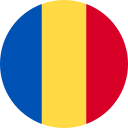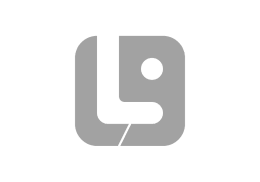Animale - Anatomia Mamiferelor
Aici veți învăța câteva cuvinte legate de anatomia mamiferelor în engleză, cum ar fi "labă", "colț" și "canin".
Revizuire
Fișe de studiu
Ortografie
Chestionar

any of the pair of branched horns that grow annually on the head of an adult animal, typically a male one, from the deer family

corn, coarne de cerb
an animal's foot that typically has a combination of nails, claws, fur, and pads

lăbuță, picior
a hard, pointed, often curved structure found on the head of some animals, such as cows, goats, and sheep, made of keratin or bone, used for defense, display, or digging

corn, coarne
any of the pair of legs at the back of a four-legged animal

membru posterior, picior din spate
any of the long, stiff hairs that grow on the face of a cat, mouse, etc.

mustăți, peri de vibrație
a long, pointed tooth found in carnivorous animals, used for biting, gripping, and tearing flesh

colți, dinți ascuțiți
the foot of a mammal that is divided into two parts such as that of goats, sheep, etc.

copită despicată, copită bifurcată
the long and protruding facial part of an animal which comprises its nose and mouth, especially in a mammal

bot, rât
a broad flat limb without any fingers that is used for swimming by some sea animals such as seals, turtles, etc.

lobotă, padelă
the joint in the hind limb of a quadruped between the fetlock and the knee

încheietura piciorului posterior, articulația din membrul posterior
the bony structure of a vertebrate's skull that frames the mouth and holds the teeth
the part of the body of an animal, a bird or a fish that sticks out at the back, which can move

coadă, coada animalului
the joint at the back of the leg and just above the hoof of any quadruped, such as a horse

chișița, articulația de deasupra copitei
the part of a horse's mane that grows from the poll and hangs down from the forehead

șuviță frontală, porțiune din coama calului care atârnă pe frunte
the horny and hard part at the end of a limb of a mammal, such as a horse

copită, picior
an organ shaped like a bag that produces milk in a female mammal such as a horse, sheep, cow, etc.

uger, glandă mamiferă
each of the curved pointy teeth of some animals such as elephants, boars, etc., especially one that stands out from the closed mouth

colț, defensivă
the lower part of the leg of an animal between the knee and the ankle

gambă, partea inferioară a piciorului
the projecting part of the face of some animals such as dogs and horses that includes their jaws and noses

bot, rât
an elongated and specialized nose or snout found in certain mammals

trompă, proboscis
a pocket-like structure that female marsupials, such as kangaroos, use to carry their young with them

pungă, marsupiu
a bone in the skull that connects to other bones in the head and is located near the temple

squamosal, os squamosal
related to or associated with the nails or claws of animals

ungual, referitor la ghearele sau ghearele animalelor
a specialized organ of the immune system located near the heart that produces T cells and plays a crucial role in the development of the immune system in early life

timus, glanda timus
a specialized wet surface found in the noses of some mammals that helps them to detect and analyze different scents

rhinarium, suprafață nazală umedă specializată
a compartment of the ruminant stomach that features a honeycomb-like structure and aids in the breakdown and fermentation of ingested plant material

reticul, a doua stomac la rumegătoare
a stomach compartment in ruminant animals that helps filter and process food particles before further digestion and absorption

omasum, foale
the fourth chamber of the stomach in ruminant animals, functioning as the true stomach where gastric juices aid in the breakdown of ingested food

abomas, cheag
a big part of the stomach in animals like cows, sheep, and goats, where food is processed and stored before it's fully digested

reticulorumen, reticulo-rumen
























